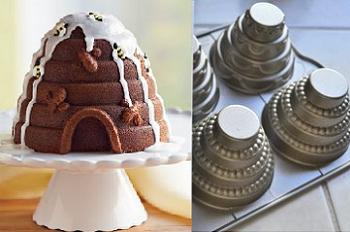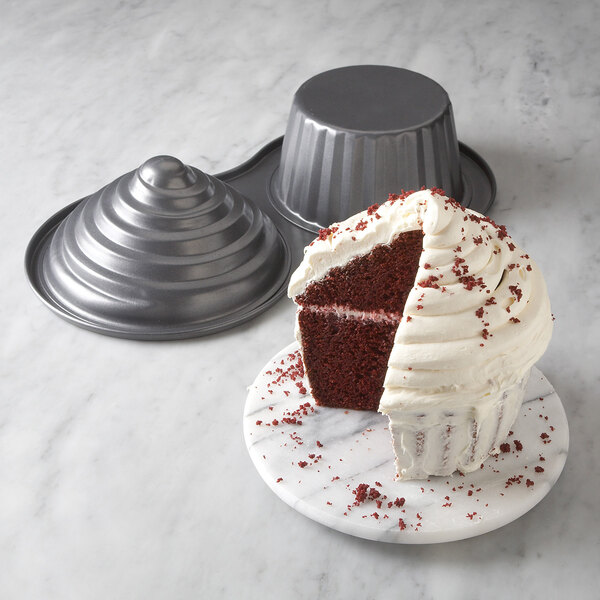As an avid baker and a passionate cake decorator, I know that the right tools can make a world of difference in your baking experience. Decorative cake pans are not just a luxury; they are essential for creating beautiful cakes that are not only tasty but also visually stunning. In this comprehensive guide, I’ll take you through everything you need to know about decorative cake pans, including types, features, and tips on choosing the perfect one for your baking adventures.
What Are Decorative Cake Pans?
Decorative cake pans are specialized baking tools designed to create cakes in unique shapes and designs. Unlike standard round or square pans, these pans come in various forms, including themed shapes, intricate patterns, and more. They are perfect for special occasions like birthdays, weddings, and holidays, allowing you to craft cakes that impress visually as well as tastefully.
Types of Decorative Cake Pans
1. Novelty Cake Pans
Novelty pans are designed in fun shapes that appeal to children and themed parties. Examples include pans shaped like cartoon characters, animals, or objects.
2. Bundt Pans
Bundt pans have a distinctive ring shape and are often used for traditional cakes. They come in various designs, some with intricate details, making them perfect for showcasing glazes or heavy frostings.
3. Layer Cake Pans
Layer cake pans are typically round and are used to bake different layers of cake. They can be decorated with filling and frosting between each layer, creating a visually appealing multi-layered cake.

4. Special Occasion Pans
These include pans designed for specific holidays or events, such as Christmas tree-shaped pans or heart-shaped pans for Valentine’s Day.
Features to Consider When Buying Decorative Cake Pans
1. Material
Decorative cake pans are made from a variety of materials, including aluminum, silicone, and non-stick coatings. Each material has its benefits:
- Aluminum: Excellent heat conductivity, resulting in evenly baked cakes.
- Silicone: Flexible and non-stick, making it easy to remove cakes without damage.
- Non-Stick Coatings: Prevents sticking and eases cleaning.

2. Size and Capacity
Always consider the size of the cake you want to create. Decorative pans come in various sizes, affecting how many servings your cake will yield.
3. Design Complexity
Some pans have intricate designs that may require more skill to decorate. If you’re a beginner, consider starting with simpler designs.

4. Ease of Cleaning
Look for pans that are dishwasher-safe or have non-stick properties for easy cleaning.
5. Price
Decorative cake pans come in various price ranges. Decide on your budget, but remember that investing in good quality pans can enhance your baking experience.

Top 5 Decorative Cake Pans: A Comparison
| Brand | Material | Size | Design | Price |
|---|---|---|---|---|
| Wilton Bundt Cake Pan | Aluminum | 10 inch | Classic Bundt | $19.99 |
| Nordic Ware Mini Cake Pan | Cast Aluminum | 9 x 5 inch | Mini Flower | $24.99 |
| Silicone Heart Cake Pan | Silicone | 8 inch | Heart | $14.99 |
| Fat Daddio’s Round Cake Pan | Anodized Aluminum | 9 inch | Round | $16.99 |
| USA Pan Fluted Cake Pan | Aluminized Steel | 10 inch | Fluted Bundt | $29.99 |
How to Use Decorative Cake Pans
1. Preparing the Pan
Before pouring in the batter, ensure the pan is properly prepared. For non-stick pans, simply spray with cooking spray. For other types, consider using parchment paper for easy removal.

2. Batter Consistency
Use a batter that is suitable for the shape of your pan. Thicker batters often work better for detailed pans, while lighter batters are great for standard shapes.
3. Baking and Cooling
Follow baking times as indicated in your recipe, but remember that decorative pans might require adjustments. Allow the cake to cool in the pan for a few minutes before attempting to remove it.

Personal Experiences with Decorative Cake Pans
Throughout my baking journey, I have experimented with different decorative cake pans, each with its set of challenges and rewards. One memorable experience was baking a Bundt cake in a flower-shaped pan. I was worried about the cake sticking, but with a little preparation and patience, it turned out beautiful! The intricate design was a hit at the party, and it was so satisfying to slice into a cake that was both delicious and visually appealing.
Pros and Cons of Decorative Cake Pans
Pros
- Enhances the visual appeal of your cakes.
- Offers variety for different occasions.
- Can be a creative outlet for decorators.

Cons
- More difficult to clean, depending on the design.
- Some designs may require advanced skill levels.
- Can be pricier than regular cake pans.
FAQs About Decorative Cake Pans
What is the best material for decorative cake pans?
The best material depends on your preference. Aluminum pans are favored for their heat conductivity, while silicone pans provide ease of use and cleaning.
Can I use decorative cake pans for any cake recipe?
Yes, but consider the batter consistency. Some pans may require thicker batters for the best detail retention.
How do I clean my decorative cake pans?
Most silicone pans are dishwasher safe, while aluminum pans may require hand washing with gentle soap to preserve their finish.
Are decorative cake pans worth the investment?
If you enjoy baking and decorating cakes, they are definitely worth the investment for their ability to create stunning desserts.
Can I use decorative cake pans for brownies or other baked goods?
Yes, many decorative pans can be used for brownies or other desserts. Just be mindful of the baking time and adjust as necessary.
Conclusion
Decorative cake pans are more than just baking tools; they are a way to express creativity and bring joy to celebrations. With the right pan, you can elevate your baking game and impress your friends and family with beautiful cakes. Remember to consider the material, size, and complexity when choosing your pans, and don’t hesitate to explore different designs. Happy baking!